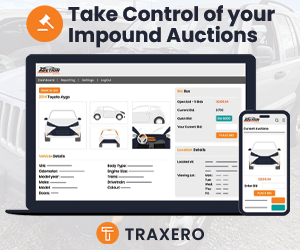Crushed Vehicles Crushed (N/A)
1950 - 2020
Tower Tip: Regulations § 393.132 What are the rules for securing flattened or crushed vehicles? (a) Applicability. The rules in this section apply to the transportation of vehicles such as automobiles, light trucks, and vans that have been flattened or crushed. [Editor’s Note: The following paragraph is revised effective July 24, 2006.] (b) Prohibition on the use of synthetic webbing. The use of synthetic webbing to secure flattened or crushed vehicles is prohibited. (c) Securement of flattened or crushed vehicles. Flattened or crushed vehicles must be transported on vehicles which have: (c)(1) Containment walls or comparable means on four sides which extend to the full height of the load and which block against movement of the cargo in the forward, rearward and lateral directions; or [Editor’s Note: The following paragraph is revised effective July 24, 2006.] (c)(2)(i) Containment walls or comparable means on three sides which extend to the full height of the load and which block against movement of the cargo in the forward, rearward and the lateral direction for which there is no containment wall or comparable means, and (c)(2)(ii) A minimum of two tiedowns are required per vehicle stack; or (c)(3)(i) Containment walls on two sides which extend to the full height of the load and which block against movement of the cargo in the forward and rearward directions, and (c)(3)(ii) A minimum of three tiedowns are required per vehicle stack; or (c)(4) A minimum of four tiedowns per vehicle stack. (c)(5) In addition to the requirements of paragraphs (c)(2), (3), and (4), the following rules must be satisfied: [Editor’s Note: The following paragraph is revised effective July 24, 2006.] (c)(5)(i) Vehicles used to transport flattened or crushed vehicles must be equipped with a means to prevent loose parts from falling from all four sides of the vehicle which extends to the full height of the cargo. (c)(5)(ii) The means used to contain loose parts may consist of structural walls, sides or sideboards, or suitable covering material, alone or in combinations. (c)(5)(iii) The use of synthetic material for containment of loose parts is permitted.
RECOMMENDED METHODS
ALTERNATE METHODS
TOW LIMITS
| Front Tow Limits | MPH | Miles |
| Automatic | NA | NA |
| Manual | NA | NA |
| Rear Tow Limits | MPH | Miles |
| Automatic | NA | NA |
| Manual | NA | NA |
TIE DOWN POINTS
Not Available
JACKING LOCATIONS
Not Available
TRAXERO makes no warranty regarding the accuracy or quality of the information provided. In no event shall TRAXERO be liable for any indirect, special, incidental, consequential or punitive damages arising from, connected with or relating to use of this site.


